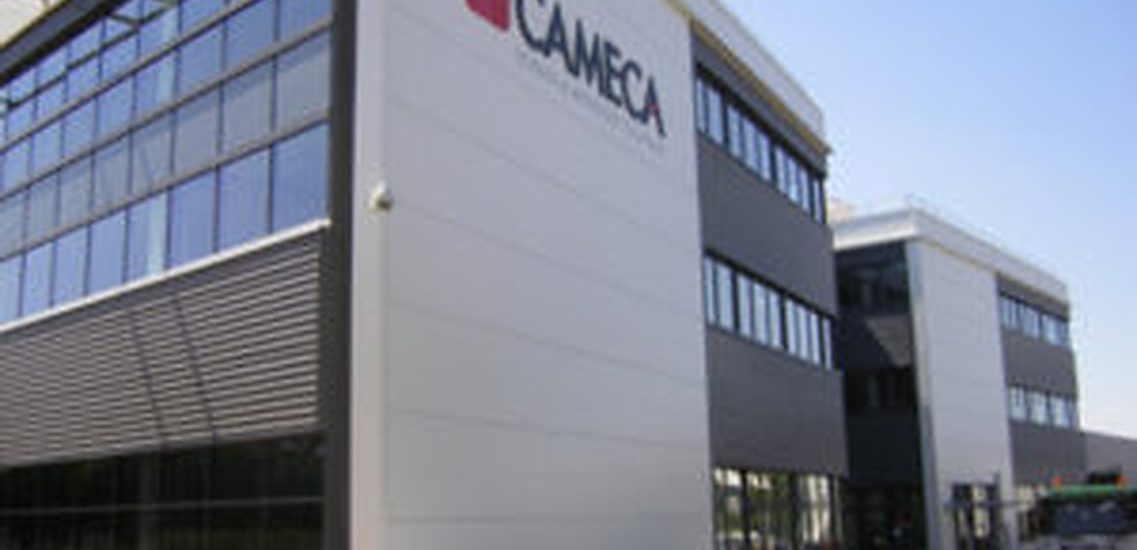
The science behind the science
What do you think – in five days of Goldschmidt presentations, the product of how many years worth of labwork have you seen projected onto the screen, how many months of troubleshooting, how many weeks of tuning ICP-MS and calibrating microprobes? I reckon they must be plentiful. Confronted with such an impressive cumulative dedication to clean labs and mass specs, one naturally starts longing to dive back into the labcoat and re-enter the homely world of hotplates and cleaning acids, of mass biases and gain corrections, to spend some quality time with your loved ones (the machines), to produce data with tiny error bars! At least that’s how I felt on Thursday. Luckily, I had signed up for one of the CAMECA factory tours, which allowed me not only to properly dive back into a (disposable) labcoat, but also got me in touch with some breathtakingly potent analytical tools.
In the 1.5 hour tour de force, we first got introduced to the companies structure – I hadn’t known that CAMECA and Nu had merged last August, and are now conjointed under the umbrella electronic instruments giant Ametek. Some of us, used to the routine of the conference, immediately gravitated towards the drinks and snacks that were waiting for us on a side table, but we were told that these were not for us until we had completed the tour. First, we got introduced to some of CAMECA’s flagship products, like the Field Emission microprobe SixFiveFE and the NanoSIMS 50L (one of which Samsung has recently purchased to test their displays). Then we got some general insight into the workflow of the company: When a new device is ordered, individual components are ordered from subcontractors. These indivdual parts are then assembled in its entirety in several steps, and tested for its functionality. Once everything is working, the machines are disessembled again into three or four parts for delivery.
Seeing all these production steps was an educative pastime, and the large geometry ion probe IMS 1300-HR³ at the end of the tour got me fantasising about a whole volcano’s worth of crystals being spatially analysed for Sr, Nd, Hf, Pb, and Tl isotopes within a few days. But I reckon these are just the petty dreams of a PhD student in igneous geochemistry.
I had almost forgotten about the snacks at the end of the tour, and soon enough, we were back on our way to the conference centre. Back there, I immersed myself in all that gorgeous data presented, with a renewed, appreciative nod to the sophisticated instruments that make everything possible, and the blood, sweat and tears shed by all of us to make it actually happen. What a wonderful geochemical world!
